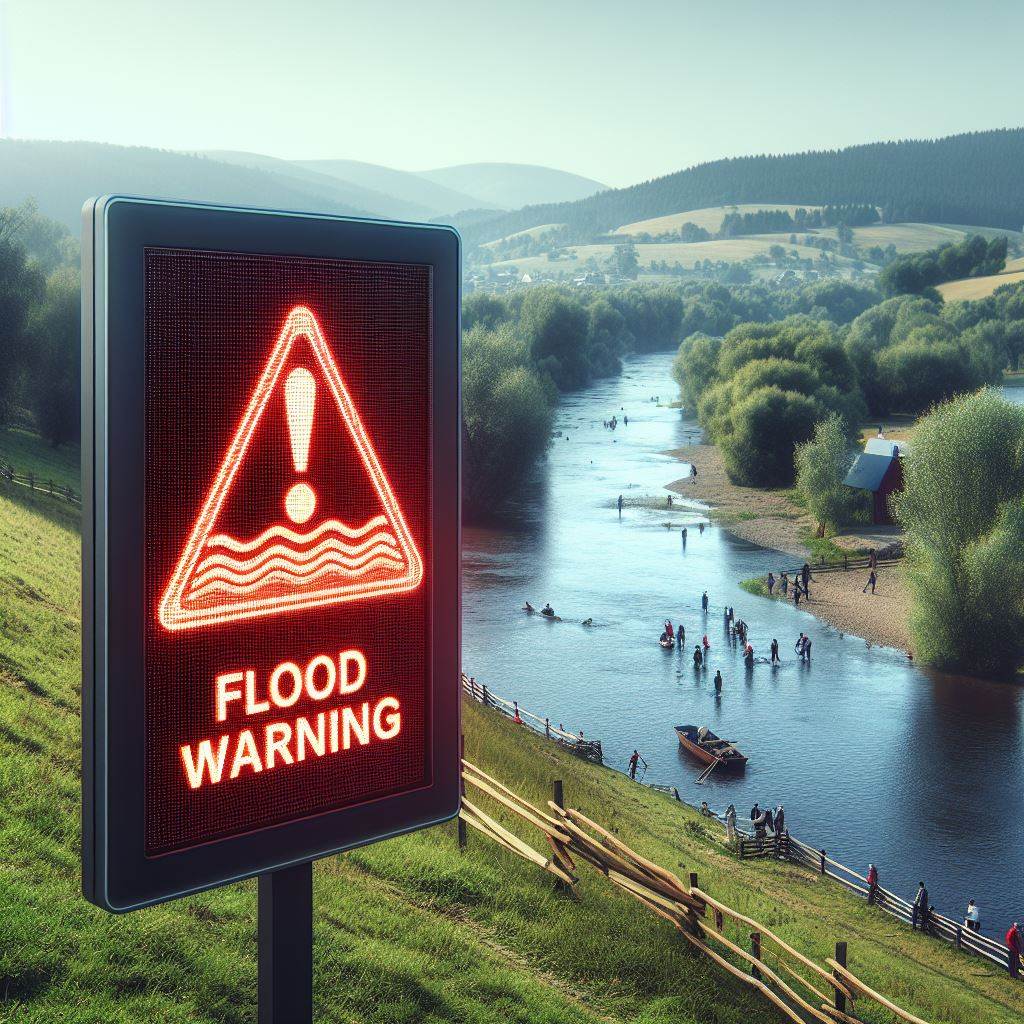What Are Flood Alerts And How Can They Protect You?

Table of Contents
Floods are devastating natural disasters, capable of causing widespread destruction, displacement, and tragically, loss of life. The sheer power of rushing water can overwhelm communities in a matter of hours, leaving little time for escape and recovery. But there's a vital tool that can significantly reduce the risk: flood alerts. Understanding what flood alerts are, how they work, and how to utilize them is crucial for protecting yourself, your family, and your property. This article will explore different types of flood alerts, explain how they protect you, and guide you through the process of signing up and preparing for potential flooding.
Understanding Different Types of Flood Alerts
Flood alerts aren't all created equal. Different terminology reflects varying levels of risk and urgency. Understanding these distinctions is vital for taking appropriate action. Common types include:
- Flood Watch: A flood watch indicates that conditions are favorable for flooding. This is a precautionary alert, suggesting that you monitor the situation closely and be prepared to act if conditions worsen. Example language might include: "Conditions are favorable for flooding. Monitor weather reports and be prepared to take action if necessary."
- Flood Advisory: A flood advisory signifies that flooding is occurring or is imminent in specific areas. This is a more urgent warning than a flood watch, urging residents to take precautions and be aware of potential hazards. Example language might be: "Flooding is occurring or is expected to begin soon. Take necessary precautions."
- Flood Warning: A flood warning indicates that flooding is already occurring or is about to occur, and there is a significant threat to life and property. This is the most serious alert, demanding immediate action to protect yourself and your belongings. Example language might read: "Flooding is occurring. Take immediate action to protect life and property. Evacuation may be necessary."
The urgency and timeframe vary considerably between these alert types. A flood watch might offer several hours or even a day's notice, while a flood warning often indicates that flooding is already underway. These alerts typically originate from national meteorological services like the National Weather Service (in the US), Environment Canada (in Canada), or similar agencies in other countries, as well as local authorities who provide more geographically specific warnings.
How Flood Alerts Protect You and Your Property
Early warning systems provided by flood alerts are lifesavers. The crucial time they afford enables you to prepare and, if necessary, evacuate safely. Acting quickly on flood alerts can significantly mitigate the risks and consequences of a flood event.
- Pre-Flood Actions:
- Move valuable items to higher ground.
- Turn off utilities (electricity, gas).
- Prepare an emergency kit including water, food, medications, and important documents.
- Implement your pre-planned evacuation route.
- Economic Benefits: Heeding flood alerts can prevent significant financial losses. This includes avoiding costly property damage repairs, reducing potential insurance claims, and mitigating business interruptions.
- Life-Saving Potential: Timely warnings allow individuals to evacuate before the floodwaters rise, potentially preventing loss of life. The most crucial aspect of a flood alert system is its capacity to safeguard lives.
How to Sign Up for Flood Alerts
Staying informed is the first step in flood preparedness. Various methods allow you to receive flood alerts tailored to your location:
- Mobile Apps: Download weather apps from reputable sources like your national weather service. Many provide location-based alerts and notifications.
- Email Alerts: Sign up for email alerts through your local government's website or emergency management agency.
- Text Messages (SMS): Some services offer SMS-based flood alerts. Check with your local emergency services for availability.
- NOAA Weather Radio: A dedicated weather radio is a reliable source of continuous weather information, including flood warnings.
Where to Sign Up: Specific instructions vary by location. For example, in the US, you can often register for flood alerts through the National Weather Service website (weather.gov). In Canada, Environment Canada (weather.gc.ca) provides similar services. Always check your local government websites for registration details. Ensure you provide accurate contact information and periodically verify your registration to avoid missed alerts. Using multiple alert methods significantly improves the chances of receiving warnings even if one system fails.
Preparing for a Flood After Receiving an Alert
Receiving a flood alert is your cue to act decisively. A well-prepared plan significantly reduces risk and potential damage.
- Pre-Flood Preparation:
- Develop a family emergency plan, including evacuation routes and meeting points.
- Assemble an emergency kit (water, non-perishable food, first-aid supplies, medications, important documents, flashlights, batteries).
- Secure loose objects that could be swept away by floodwaters.
- Move valuable items to upper floors or higher ground.
- During a Flood:
- Evacuate immediately if instructed to do so by authorities.
- Never drive or walk through floodwaters.
- If trapped, seek higher ground and call for help.
- Post-Flood:
- Avoid floodwaters; they may be contaminated.
- Contact your insurance company to report damages.
- Seek assistance from relevant local authorities and relief organizations for cleanup and recovery efforts.
- Understand your flood insurance policy thoroughly.
Conclusion
Flood alerts are a vital lifeline in protecting lives and property during flood events. By understanding the different types of alerts—flood watches, advisories, and warnings—and taking prompt action, you can significantly mitigate the risks associated with flooding. Remember the importance of registering for multiple alert systems and developing a comprehensive preparedness plan.
Don't wait for a flood to strike—sign up for flood alerts today! Protect yourself and your family: Get flood alerts now! Share this information with your friends, family, and neighbors to increase awareness and preparedness within your community. The potential to save lives and limit property damage by using flood alerts cannot be overstated.

Featured Posts
-
 Kiefer Sutherland Casting News Fans React To Latest Reports
May 26, 2025
Kiefer Sutherland Casting News Fans React To Latest Reports
May 26, 2025 -
 Laviolettes Dismissal Impact On The New York Rangers Future
May 26, 2025
Laviolettes Dismissal Impact On The New York Rangers Future
May 26, 2025 -
 Monaco Grand Prix 2025 Everything You Need To Know About Watching The Race
May 26, 2025
Monaco Grand Prix 2025 Everything You Need To Know About Watching The Race
May 26, 2025 -
 Vestidos Iconicos Carolina De Monaco Y Alexandra De Hannover En El Baile De La Rosa 2025
May 26, 2025
Vestidos Iconicos Carolina De Monaco Y Alexandra De Hannover En El Baile De La Rosa 2025
May 26, 2025 -
 The F1 Over 40 Club Triumphs And Setbacks
May 26, 2025
The F1 Over 40 Club Triumphs And Setbacks
May 26, 2025
